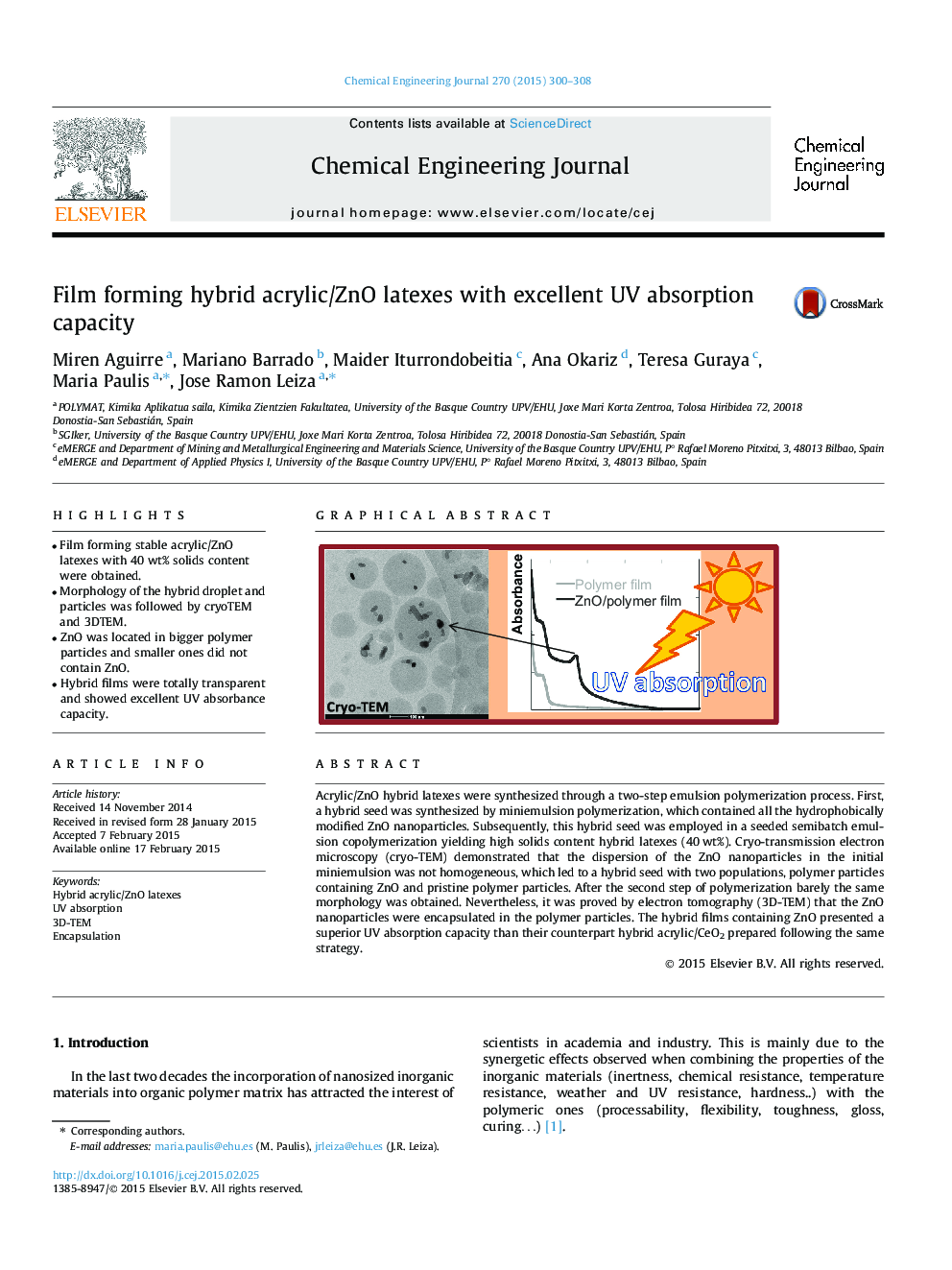| Article ID | Journal | Published Year | Pages | File Type |
|---|---|---|---|---|
| 146497 | Chemical Engineering Journal | 2015 | 9 Pages |
•Film forming stable acrylic/ZnO latexes with 40 wt% solids content were obtained.•Morphology of the hybrid droplet and particles was followed by cryoTEM and 3DTEM.•ZnO was located in bigger polymer particles and smaller ones did not contain ZnO.•Hybrid films were totally transparent and showed excellent UV absorbance capacity.
Acrylic/ZnO hybrid latexes were synthesized through a two-step emulsion polymerization process. First, a hybrid seed was synthesized by miniemulsion polymerization, which contained all the hydrophobically modified ZnO nanoparticles. Subsequently, this hybrid seed was employed in a seeded semibatch emulsion copolymerization yielding high solids content hybrid latexes (40 wt%). Cryo-transmission electron microscopy (cryo-TEM) demonstrated that the dispersion of the ZnO nanoparticles in the initial miniemulsion was not homogeneous, which led to a hybrid seed with two populations, polymer particles containing ZnO and pristine polymer particles. After the second step of polymerization barely the same morphology was obtained. Nevertheless, it was proved by electron tomography (3D-TEM) that the ZnO nanoparticles were encapsulated in the polymer particles. The hybrid films containing ZnO presented a superior UV absorption capacity than their counterpart hybrid acrylic/CeO2 prepared following the same strategy.
Graphical abstractFigure optionsDownload full-size imageDownload as PowerPoint slide
